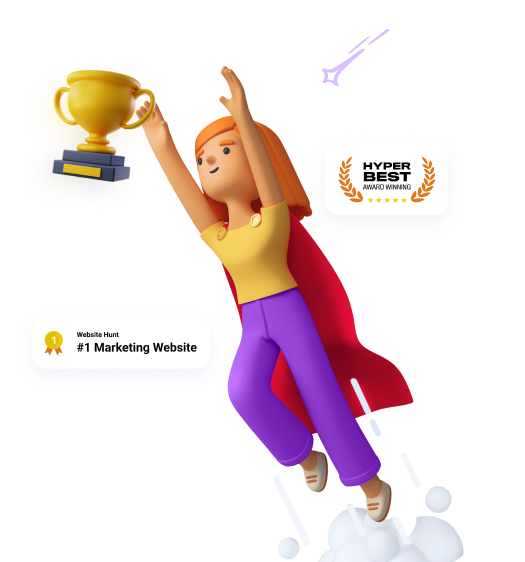
In the early years of our new century, we were working in talent management software companies, implementing integrated platforms for dozens of medium to large businesses. For the more forward-thinking companies, many of them global household names, the ultimate holy grail was a succession planning application.
Supported by an applicant tracking system, performance and goal management, employee development, and integrated compensation planning, the succession applications comprised a database and talent dashboard that brought together all of the history, performance, and learning information about employees into an interactive organization chart.
All based on bad data.
Follow the Data Trail
To understand why we call it bad data, let’s follow the journey of the data from beginning to end. Start with the recruiting process, where hiring managers make their decisions based on their best judgment of a candidate’s ability to do the job. The evidence a manager used was a finely crafted resume, a manual screening process, and a series of interviews.
Then, managers set performance objectives based on their perception of how the new employee’s job supported organizational goals. At the end of the year, the manager exercised “best judgment” to rate employees on their performance, and awarded merit raises and bonuses based on that judgment. Thousands of companies developed rating models intended to make evaluations more objective, but managers’ judgment decided the difference between evaluative adverbs like often, frequently, always, and sometimes.
The managers created development plans for employees based on their assessment of what skills and competencies the employee needed to develop, and then evaluated, again based on their best judgment, how well the employee had progressed.
Then, as the final stroke, the manager used their experience to estimate the employee’s potential for growth and advancement so the dashboard could display the employee’s position on the famous 9-box. Only then, after the intervening gut decisions, were the top contenders evaluated using professional, objective assessments. To be fair, we must say that the best companies used assessments early in the process, but most did not.
The problem is in our humanity.
How We Make Decisions
Humans do not make decisions with their rational minds. We make hundreds of decisions every day, originating in the emotional centers of our brains, then we use our rational minds to justify them. Even when we work through the process of gathering information, quantifying costs and benefits, using every possible data source we can find, our biases guide our decisions.[1]
Let’s look at the evidence. In Harvard Business Review, Marcus Buckingham cited three studies where the effect of rater bias was well over half of the rating. In the Applied Psychology study, 51% of the variance in ratings was determined by bosses’ idiosyncratic biases, almost twice the effect of actual performance.[2]

The result is a growing movement to change the way we assess performance and a small but growing dependence on harnessing the enormous amounts of data we generate to make better decisions.
Implications for HR Analytics
The digital transformation of the past fifteen years has brought big changes. Now we have validated assessments during the recruiting process, performance analytics to support evaluation decisions, and, in the most progressive companies, profiles based on predictive analytics.
Well-designed pre-employment assessments work. We have evidence that algorithms make better hiring decisions than people. We have seen the positive impact on personal development a well-designed assessment can bring to an individual, and that identifying high potential employees and developing them has a positive impact on organizational performance.
That doesn’t mean you need to bet the business on an analytics function. If you can afford to invest in a team of data scientists, a state-of-the-art analytics engine, and a massive data warehouse, do it. For most, there are less risky alternatives.
- Many consulting firms specialize in people analytics. You can capitalize on the economy of scale offered by a company that serves many customers.
- Skilled consulting analysts and statisticians can help you realize the full value of the technology you have.
- Assessment vendors are reaping the same rewards of analytics that all of us are, and passing that value on to their customers.
Our recommendation is to start from where you are with the data and tools you have and work on the problem of the leadership pipeline. We will write more about how to get started over the next few weeks.
If you have questions about getting started or implementing analytics in your organization, call us at +1 855-978-6816 or use the comments section below. We will be glad to share our knowledge.
References:
1. Haidt, Jonathan. The Righteous Mind: Why Good People Are Divided by Politics and Religion. New York: Pantheon Books, 2012.
2. Scullen, Steven E., Michael K. Mount, and Maynard Goff. "Understanding the Latent Structure of Job Performance Ratings." Journal of Applied Psychology 85, no. 6 (2000): 965. doi:10.1037/0021-9010.85.6.956.
Have you been waiting for the right time to begin your journey to people analytics?
Learn how you can make the change from efficiency measure to changing the way people work.

Phenom eCloud is a comprehensive technology solutions provider committed to empowering businesses to overcome challenges, enhance their workforce capabilities, and achieve superior outcomes.






Leave a Comment